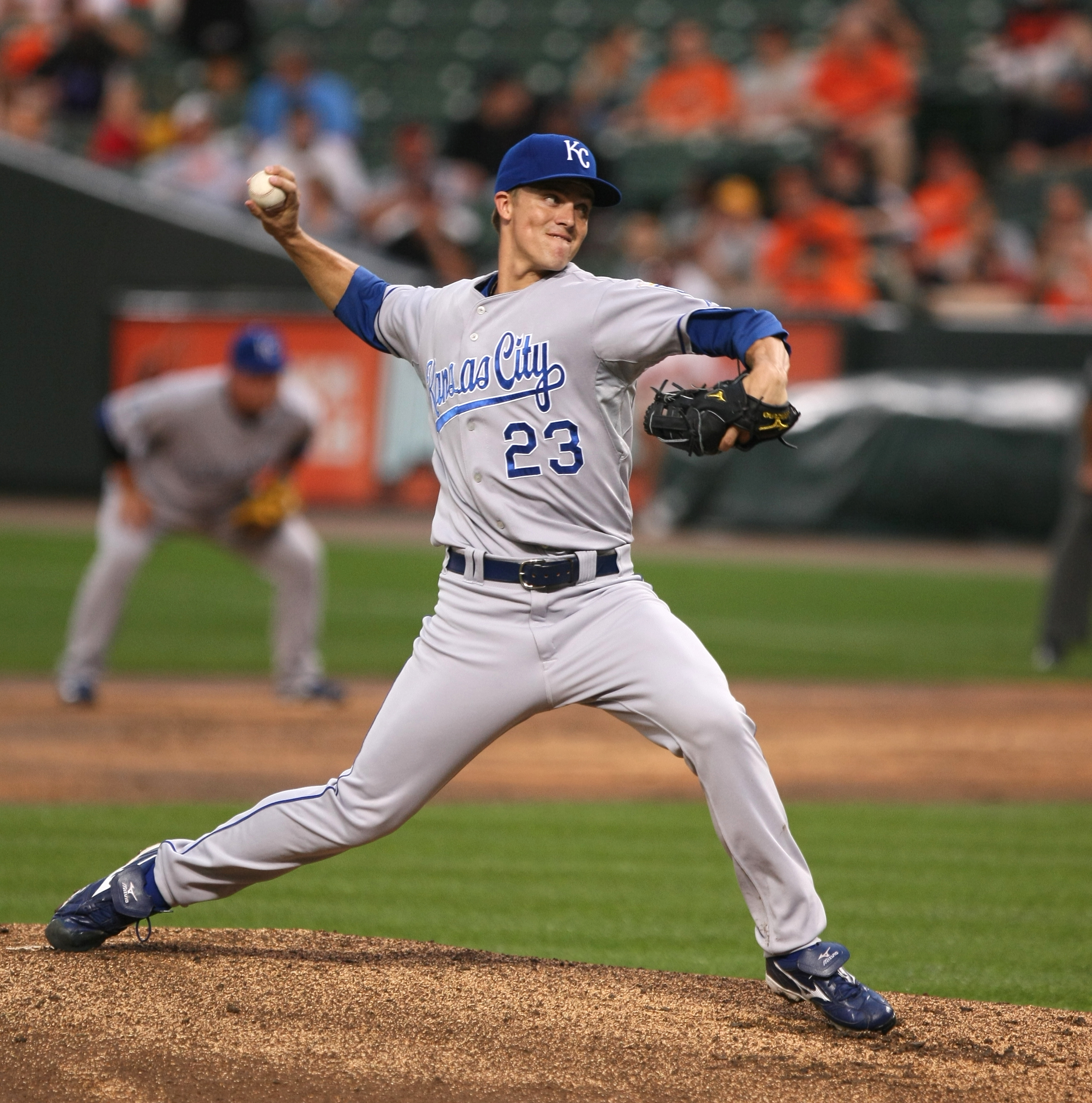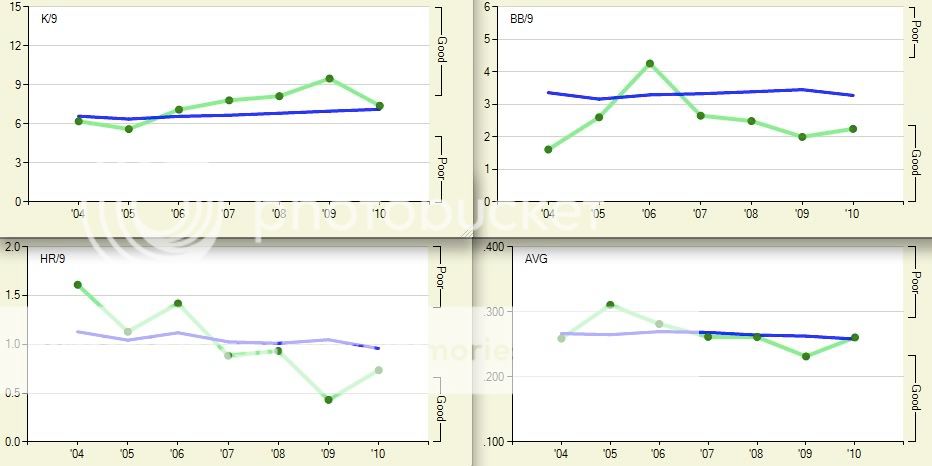Aaron Hill
Aaron Hill had a terrible 2010: 205/.271/.394 (BA/OBP/SLG) which led to 1.1 WAR almost all based on defense and position. His offensive ‘contribution’ was 14 runs below replacement level.
This was especially disappointing considering his 2009: .286/.330/.499 which led to 3.9 WAR and 18 runs above replacement level on offense. All told that was a swing of 32 runs offensively.
What happened?
You should know what we’re going to look at by now.
Walk and strike out rates didn’t change much
His power remained above average
BABIP fell off of a cliff
He went from being a guy with an average or better BABIP to the lowest BABIP in the majors among qualified players. So there we go. Expect a full bounce back from Hill next season as luck corrects itself. If only it were that easy.
There is a huge change in Hill’s batted ball profile in 2010.
His ground ball rate is around where it has been.
But his fly ball rate soared upwards while his line drive rate cratered.
We know that line drives have the highest BABIPs (.750ish) and fly balls have the lowest (.140) so we’d fully expect his BABIP to to decrease.
Using the major league average BABIPs on Hill’s batted ball profile we get that he should have been expected to have had a BABIP of .240. His actual BABIP was .196. If Hill had had a BABIP of .240, he would have had 24 more hits. If all of those hits were singles, his line for 2010 would have looked like: .251/.305/.440, a heck of a lot better.
Do Hill’s BABIPs usually follow league average?
For his career:
Ground Ball BABIP = .241 – YEP
Fly Ball BABIP = .136 – YEP
Line Drive BABIP = .706 – Not quite.
If we give Hill a BABIP consistent with his career averages we come up with a BABIP of .234 which gives Hill and extra 22 hits and a line of: .246/.300/.435. Still much better than his actual 2010.
But .245/.300/.435 is still way off from his .270/.325/.427 career numbers and we still don’t know what’s going on with the lack of line drives and increase in fly balls.
In 2009 Hill hit 36 home runs, that’s more than double how many he hit in his 4 previous seasons combined. We know how the Blue Jays have emphasized hitting for power (see Bautista, Jose for Exhibit A) the last couple of years. Have the Blue Jays encouraged Hill to try and hit more fly balls in order to get more home runs? I don’t know. He hit 36 in 2009 without resorting to hitting more than half of his balls in the air. In 2009 Hill also had a HR/FB rate of 14.9% compared to a career rate of 8.6%.
Year HR/FB, Isolated Power
2010 10.8%, .189
2009 14.9%, .213
2008 2.4%, .098
2007 8.6%, .168
2006 3.6%, .095
2005 2.6%, .111
Hill’s HR/FB and ISO are all over the map. League average ISO tends to be around .150 and HR/FB around 10%. Some years Hill is well above average, and some he is well below. So, who is the real Aaron Hill?
I don’t really know. His walk and strike out rates seem to be established but his power numbers are all over the place and the sudden change in batted balls is just weird.
Batted ball rates stabilize over a relatively small number of plate appearances (well below the 580 Hill received last year) so it’s unlikely that his increase in fly balls was a fluke and much more likely that it was something conscious in his plate approach. It sure seems to be a bad plate approach though. Aaron Hill is 5’11” and 200 lbs (about the same size that I am). He’s not a hulking slugger who should be trying to launch every shot into the seats. I’d hope that the Blue Jays see this and try to get him to hit less fly balls.
I’m not encouraged by Hill’s month-to-month batted ball data
Month FB%
April 51.7%
May 48.9%
June 56.7%
July 51.4%
August 61.7%
Sept/Oct 53.6%
Doesn’t appear that they tried to get him to alter his swing during the season at all as he hit more fly balls the second half of the season, than he did the first.
So, what do I make of it?
Official Prediction:
.255 batting average, 540 AB, 26 doubles, 17 home runs, 38 walks, 76 strike outs, .260 BABIP, .307 OBP and .411 SLG
That’s splitting the difference in his FB rate between his career and 2010 and coming up with 48% fly balls and 15% line drives.
If he keeps hitting fly balls like he did in 2010 the batting average and On Base Percentage will come down with a few more home runs.
If he returns to his 2006-2009 batted ball rates then expect the average and On Base Percentage to come up and a drop in home runs.













.jpg)











